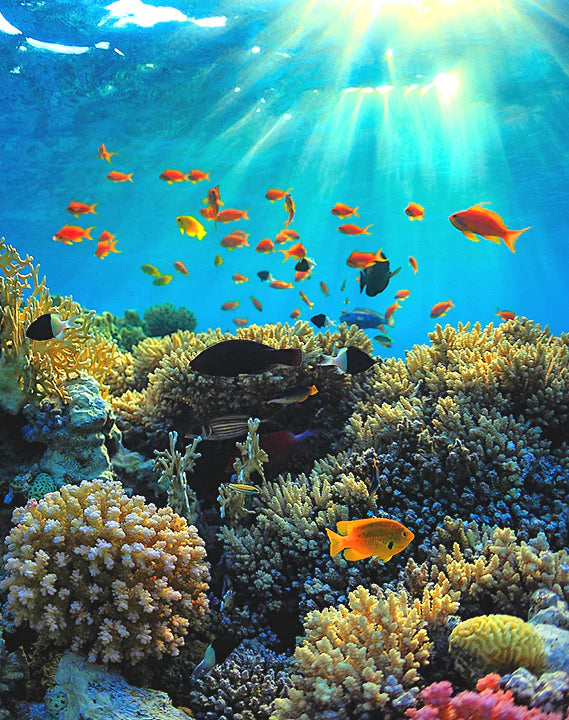OUR MISSION
Climate change, water pollution, overfishing, but also the chemical filters contained in sunscreens cause coral bleaching and the alteration of marine biodiversity. Today, thanks to information, we can become aware of the impact that our actions have on the environment and orient our habits towards eco-sustainable choices.
We are proud partners of 1% for the planet , it is a global network of companies and environmental organizations working together to support people and the planet. By donating 1% of our annual sales, we support a growing network of non-profit organizations to address our planet's most pressing environmental issues.


CORAL REEFS ARE IN DANGER
The combination of various factors disturbing the marine environment stresses the corals, leading them to expel the small algae they need to survive. This process is called bleaching , because it leaves only the white skeleton of the now lifeless coral.
About 25% of underwater life depends on the habitat created by coral reefs and over 500 million people around the world rely on them for food, tourism, employment: an ecosystem worth almost 30 billion dollars. Global bleaching events, which were once a rarity, are occurring more often and with greater intensity. In 2016 we saw the largest coral bleaching in history, and it could happen again if we don't do something now.
Oxybenzone, Octinoxate, Octocrylene (common active ingredients found in most sunscreens on the market) change the DNA of corals, causing sterility and inability to reproduce. These active ingredients, depositing on the corals, cause them to absorb more heat, therefore the natural tolerance threshold towards changes in water temperature is lowered, causing bleaching and increasing the risk of dying.

THE SOLUTION: OUR SPF
